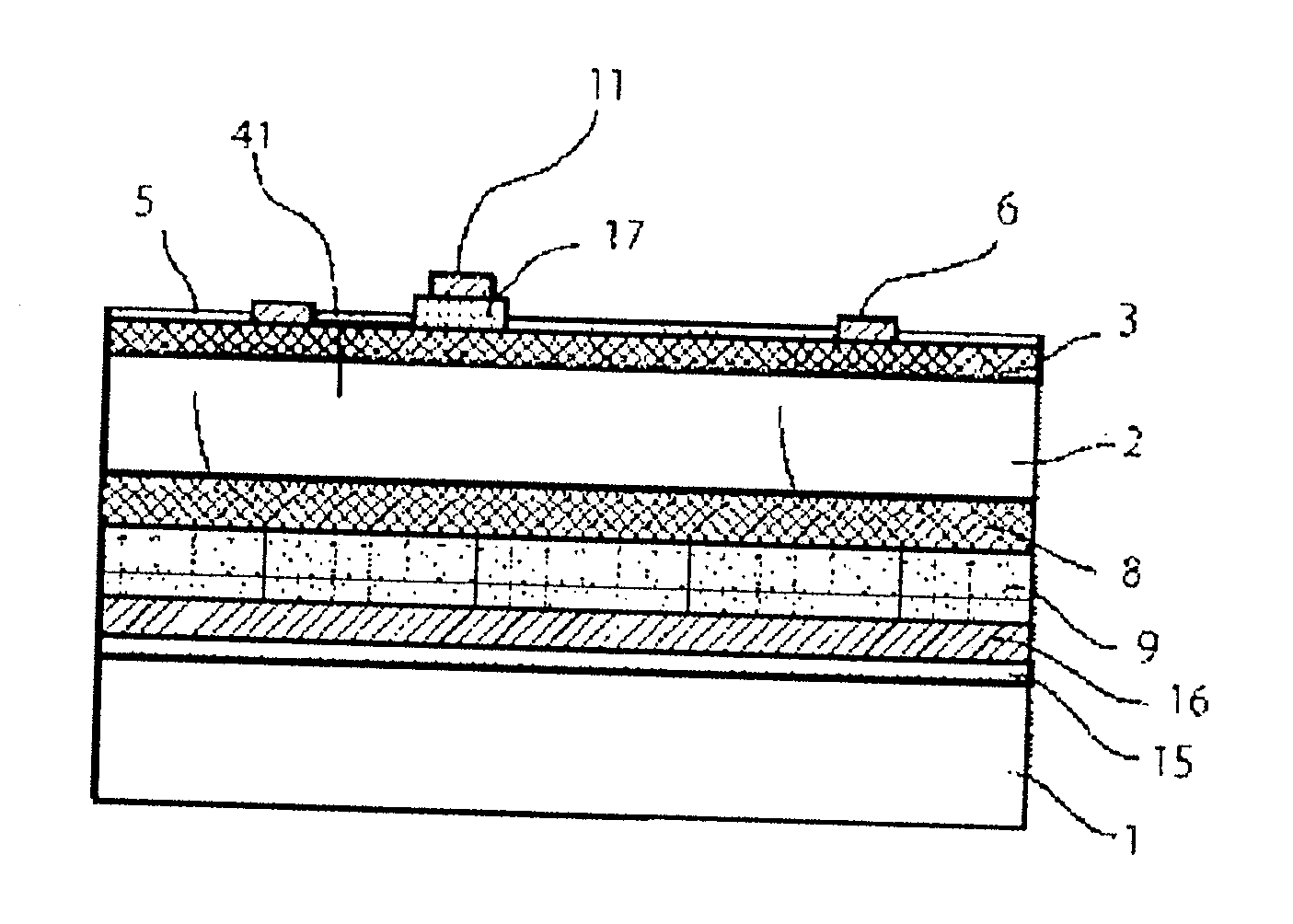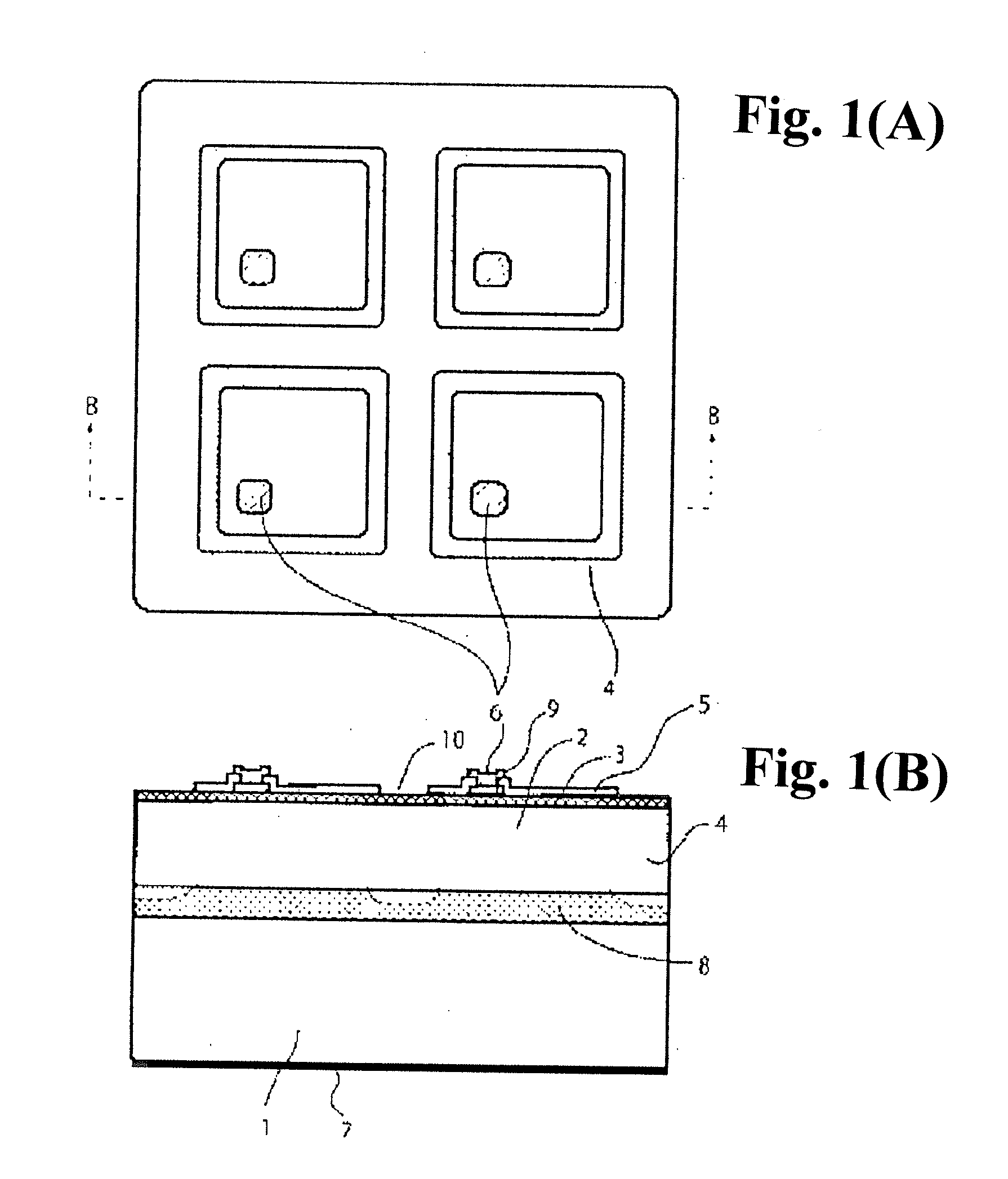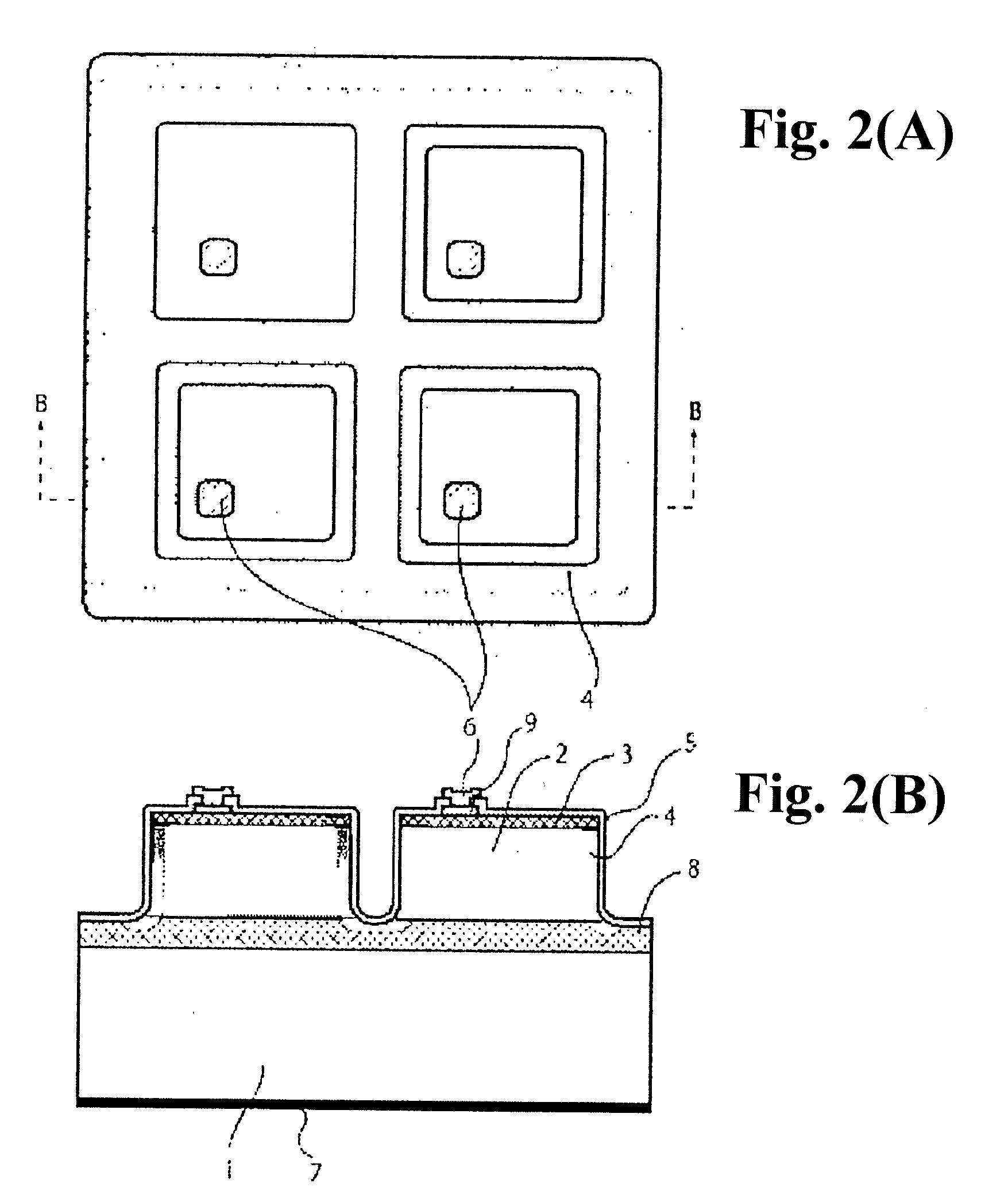Compound semiconductor light-receiving element array
a light-receiving element and semiconductor technology, applied in the field of compound semiconductor photodiode arrays, can solve the problems of high cross-talk between the elements, invalid light shielding masks, and problems in production yield, and achieve the effects of stable over time, easy manufacturing, and uniform characteristics
- Summary
- Abstract
- Description
- Claims
- Application Information
AI Technical Summary
Benefits of technology
Problems solved by technology
Method used
Image
Examples
example 1
[0042]FIGS. 1(A) and 1(B) show an example of a planar array PD as an embodiment of this invention which is formed by deep zinc diffusion. FIG. 1(A) is a plan view, FIG. 1(B) shows a cross-sectional view of the element along B-B line. The carrier concentration of a P-type InP substrate is set to the order of 1018 to 1019 cm−3 which enables to obtain ohmic characteristics easily when the P side electrode 7 is formed on the substrate. An InGaAs photosensitive layer 2 can be an undoped I (intrinsic) layer or a low concentration N-type layer with 1014 to 1015 cm−3 carrier concentration. The InGaAs photosensitive layer 2 is used as a light-absorbing layer and can be replaced with any composition of InxGa1-xAsyP1-y in order to provide the selectivity of the detection wavelength, or it is also possible to change to an InAlAs system composition to extend the detection wavelength. The thickness of the photosensitive layer 2 is determined by the conditions to optimize the response speed and qu...
example 2
[0045]FIG. 2(A) shows a plan view and 2(B) shows cross-sectional view of a mesa isolated PD to the direction of the arrow B as an embodiment of the present invention. An island shape was formed by mesa etching of a wafer formed of an InGaAs photosensitive layer 2 and an N-type InP window layer 3, which were stacked on a P-type InP substrate 1. Then, a P-type layer 4 was formed by diffusing zinc selectively only to the mesa side and bottom. An N-type InGaAs contact layer was left in an island shape on the part of N-type InP window layer 3. The top surface, the mesa side and bottom were covered with a dielectric layer 5 formed of a silicon nitride film. Finally, an N-side electrode 6 was formed on the opening of the silicon nitride film. A P-type InP barrier layer is a buffer layer formed between a substrate and laminated epitaxial layers in order to improve the quality of the epitaxial crystal layer, and simultaneously works as an etch stop layer using etch selectivity during the mes...
example 3
[0050]FIG. 3 shows a one-dimensional array and two-dimensional array, in which incident light is illuminated on their substrate sides. In these cases, the P-type electrodes 11 are formed in contact with the diffused surface 4, and they are bonded with a read-out integrated circuit (ROIC) or a circuit board 12 via metal bumps 13. Such a flat surface structure array as shown in FIG. 1 is advantageous in terms of yield and reliability, because of easiness in the device fabrication process compared with mesa type arrays.
PUM
 Login to View More
Login to View More Abstract
Description
Claims
Application Information
 Login to View More
Login to View More - R&D
- Intellectual Property
- Life Sciences
- Materials
- Tech Scout
- Unparalleled Data Quality
- Higher Quality Content
- 60% Fewer Hallucinations
Browse by: Latest US Patents, China's latest patents, Technical Efficacy Thesaurus, Application Domain, Technology Topic, Popular Technical Reports.
© 2025 PatSnap. All rights reserved.Legal|Privacy policy|Modern Slavery Act Transparency Statement|Sitemap|About US| Contact US: help@patsnap.com



